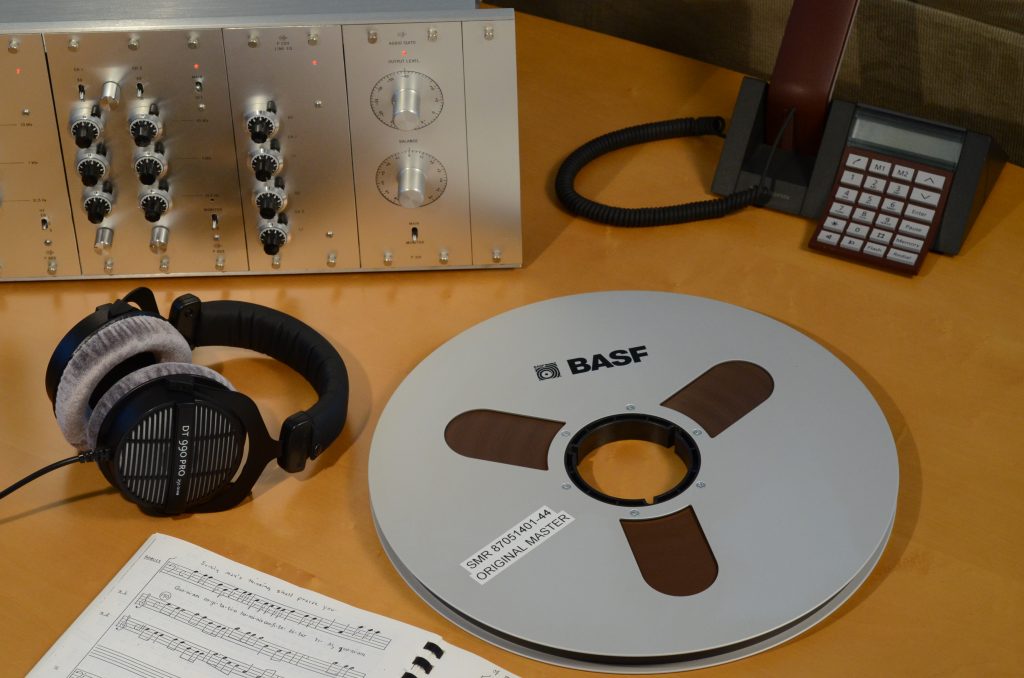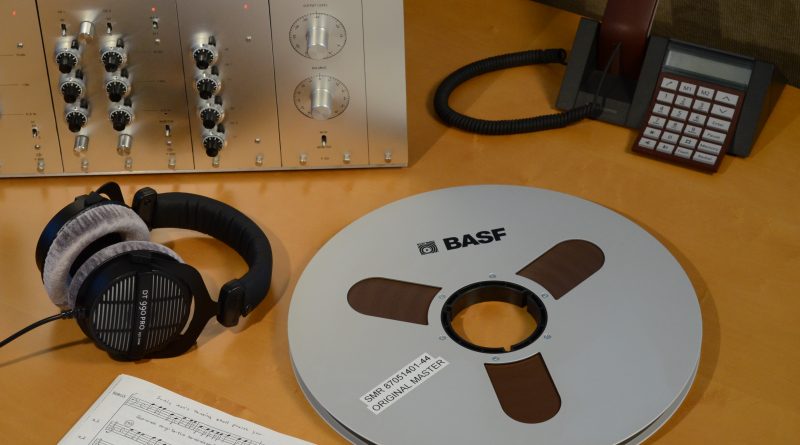Analog Tape: Doing It Right the First Time!
In October of 2019, I wrote an article on probably the single most important link in the long chain of production steps required to bring a classic analog master tape into our digital music world. The importance of maximizing the fidelity of the tape playback using a state-of-the-art reproducer and associated electronics cannot be overstated. And the sad truth is mastering studios – those run by the labels themselves tasked with the job – have been doing analog tape to digital transfers with less quality than is possible.
Of course, the mastering engineers, and executives they report to at the labels, will deny that they lack both the equipment AND expertise to make state-of-the-art transfers of analog master tapes but the reality is they do. I’ve visited some of those mastering rooms, met (and know) some of the best engineers in the business, and understand the practical limitations that exist in their studios. And they also need an equally capable analog to digital converter, master clock source, and a calibrated signal path from start to finish.
Fred Thal, an expert in the field, and I have been friends for a while. Recently, he asked if he could publish a guest article on this site. I promptly agreed. Read and learn.

Bringing Science Back to Audio: Introducing the Foundation for Recorded Music Preservation
A sobering reminder of the astonishing effectiveness of disinformation campaigns permeating consumer audio is the number of persons somehow believing that a vinyl LP record affords today’s best-known means of preserving heritage recordings.
While over on the digital side, a smaller, separate campaign tirelessly asserts (equally incorrectly!) that because linear pulse code modulation (LPCM) is inherently “bad sounding,” DSD is therefore our best-known digital recording technology.
Clearly, it’s time that we try to bring some science back into audio.
Adopting a triage perspective will bring focus onto the surviving original analog master tapes, stored away in vaults around the globe.
Because these tapes are deteriorating chemically and physically with time, we’ve established The Foundation for Recorded Music Preservation (recordedmusicpreservation.org). The Foundation for Recorded Music Preservation is a California nonprofit public benefit corporation.
Santa Barbara was chosen as the home for the foundation because of its proximity to the UC Santa Barbara campus. We’re excited by the possibility of symbiosis with the many UCSB graduate and doctoral programs that directly relate to our mission. Some of these are:
- Chemistry & Chemical Engineering
- Electrical & Computer Engineering
- Film & Media Studies
- Materials Science
- Mechanical Engineering
- Media Arts & Technology
- Music
- Physics
It’s important to acknowledge that the thousands of people who insist that the original vinyl release of an analog-era recording often sounded better than did the CD re-issue aren’t wrong.
It’s only their hasty conclusion that this was due to an inherent fault of LPCM that’s mistaken.
Any readers who are in Santa Barbara area who would like to help with our mission, please get in touch! (Visit the contact page on the site.) Thanks.


Hi Mark,
This initiative of the Foundation for Recorded Music sounds wonderful, in principle. But there was practically no information – no details – on their website. Who keeps the digital copies made – just the copyright owner, or also the Foundation? Who is backing the initiative financially? Does the Foundation take its equipment to the location of the master tapes, or do the tapes have to be transported to Santa Barbara? If the latter, are sufficient precautions being taken to eliminate the worry that priceless masters may be lost or damaged in transit? What equipment are they using for playing the tapes, and for A/D conversion? What resolution?
Inquiring minds want to know 😉
Carl
I’m not sure I can answer your questions. Hopefully, Fred can contribute. He knows that the website has to be much more informative.
Mark,
Please post these informations at gearslutz.com pro audio forum as well. Your contributions is seriously welcome there. More and more young musicians and engineers are joining there and I believe, this new generation is the true audience.
Best,
Kevin
I’ll visit the site and see what options I have. Thanks.
Hello Carl,
First, thanks for your interest in our work.
Question: There was practically no information – no details – on their website.
Answer: Yes, the lack of technical details on the pro-forma webpage is intentional for now.
Question: Who keeps the digital copies made – just the copyright owner, or also the Foundation?
Answer: Both. The Foundation will act as a safety copy repository.
Question: Who is backing the initiative financially?
Answer: Those who appreciate, understand and value the importance of our mission.
Question: Does the Foundation take its equipment to the location of the master tapes, or do the tapes have to be transported to Santa Barbara?
Answer: The latter. Ours will be a large facility, housing many discrete workstations where incoming tapes are subjected to extensive examination, treatment and documentation steps, often lasting over several days, before ever being mounted on a reproducing transport.
Question: Are sufficient precautions being taken to eliminate the worry that priceless masters may be lost or damaged in transit?
We’ve long recommended that irreplaceable master tapes be hand-carried by personal courier.
However, what we’ve seen over the past forty years is that transportation is almost never the cause of loss for these artifacts. It’s how they’re handled at either end of the journey.
Question: What equipment are they using for playing the tapes, and for A/D conversion?
Answer: We don’t publish details on this because doing so would only invite derision from the misinformed audiophile community who are active on audio forums.
“They can’t be making audiophile grade transfers because they’re not using so-and-so’s ADC and so-and-so’s cables and they’re not even using vacuum tube circuitry!”
Further, the copyright owner often assigns a re-issue producer to supervise a new transfer and that person may have ultimate responsibility to choose the components in the transfer chain. They’re welcome to bring their own ADC, if they prefer. We can only make recommendations.
But the first part of your question (equipment for playing the tapes) remains a critical one, as it’s obviously the tape transports employed over the past forty years that are damaging and destroying deteriorating and increasingly fragile masters.
This gets to a principal reason for our foundation’s creation: Stop destroying irreplaceable master tapes! See, for example, the Boston Globe article on Iron Mountain, by Sarah Rodman, from May 20, 2013.
While acetate base film deterioration is clearly a serious issue, if we look also at modern PET base films exhibiting oxide binder degradation (something known about since the mid 1980s) we observe a softening of the binder composition which renders the layer highly susceptible to physical damage by something as simple as being pulled over the fixed-pin lifter bars found on literally millions of popular studio tape transports.
Yet “transfer specialists” continue to use them, while seeming to focus only on the tape playback electronics.
(By the way, playback electronics can harm master tapes when they send any errant current into the repro head and yes, this happens!)
That these facts are not more widely recognized and respected suggests to us that far too few people having scientific backgrounds have been involved in the work.
Now, please consider just a few of the many questions that we believe should be asked about tape transports used for high-value master tape transfer:
How is the tape guided and under what tensions?
What components, both stationary and rotating, come into contact with the oxide layer?
What is the mass and rotational inertia of any rotating components?
What bearings are employed in the passive rotational elements and what are their starting and running torques?
How is the surface temperature of these path components controlled?
Is the transport system providing a time-base accuracy that is better by an order of magnitude than the recorder that made the master tape? (This is absolutely necessary if you want to discover what’s actually on the master.)
Question: What resolution?
Answer: As you probably know, there’s been a consensus by experts centering on 24-bit, 96kHz LPCM for almost two decades now and this is what we employ for our internal transfer archival copies. This copy can be generated in a parallel encoding chain that may be entirely different than what the copyright owner is requesting. (If a copyright owner demands DSD, we will give them DSD.)
Regarding time-base distortion remediation: If it’s discovered that recovering a technical pilot signal could be effective for removing time base errors by subsequent processing performed in the digital domain, a higher LPCM sampling rate may be employed so that the pilot can be captured temporally coincident with the audio program.
I hope your questions are answered and again, your interest in our mission is appreciated.
Fred Thal
Hi Fred,
Thanks for the extensive answers, very helpful! I understand why you need to dodge the one about backers, and that was a mere curiousity on my part. I’m glad that the Foundation keeps a copy of the new digital masters. If the copyright owner wants DSD, I hope you are able to keep both the DSD and an LCPM master.
What you say about the dangers of the transfer process on inadequate equipment makes a lot of sense, and I can see that it is overall a bigger issue than the concern about loss or damage of tapes in transit.
Unfortunately I am not a rich person who can back your Foundation financially, but I wish you great success!
Carl
Great article and much need project. I’m just sorry that I’m not close enough to help out in some way. Good luck with the project and keep us all informed somehow. I would love to be able to hear some samples and the work goes on.
Has the music industry considered a piracy-proof pay-per-play system so that it can let us have good digital recordings without having to worry about piracy or releasing better versions in the future to generate income? I’ve gone through the details of such a system, and I believe that it would be feasible, but it would be very disruptive to the existing system.